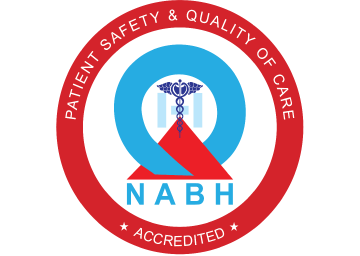Paediatric Tumors
Bone tumours are bony lesions or bony outgrowths which occur due to abnormal change in the cell morphology of the bone or soft tissues. They can be either benign (non-cancerous) or malignant (cancerous). The management is completely different in both the spectrum. Usually, it is very difficult to diagnose in children because of the lack of proper clinical symptoms. We as a team are specialised in appropriate and timely diagnosis of bony tumours in children and treating them effectively. We routinely treat all kinds of benign bone tumour and provide excellent adequate and appropriate management to these children.
What are the Symptoms?
The common symptoms which the children say with bony tumours can be
- Vague pain, night pain, pain increased after activities
- Bony swelling in the region which can be painful or painless
- Restricted joint movements in cases of swellings around the joints
- Neurological symptoms like tingling sensation, burning sensation or weakness when the lesion presses the nerves
- Some children may get admitted with pathological fracture
- Night pains specifically relieved by aspirin (typically seen with osteoid osteoma)
Diagnosis
Most of the benign tumours with swelling can be diagnosed by x- rays. Lytic lesions may need MRI to accurately see the extent of the lesion which will be helpful in planning the management. Some lesions like MHE, osteoid osteoma require CT scans to exactly locate the site of the lesion. At our hospital, with an expert team of doctors including paediatric orthopaedic surgeon, well experienced radiologist, paediatric oncologist and pathologist along with a team of experienced anaesthetist and highly skilled operation theatre and bone bank staffs we provide satisfactory and holistic care for children and we are well equipped and experienced to perform complex and advanced procedures in these children when necessary
The tumours which we routinely treat are
- Aneurysmal bone cyst
- Simple bone cyst
- Osteochondroma
- Multiple hereditary Exostosis (MHE)
- Osteoid osteoma
- Osteoblastoma
- Giant cell tumor
- Fibrous cortical defect
- Osteofibrous dysplasia
- Non ossifying fibroma
Management
We do various procedures for managing the tumours like excision of the tumours, curettage and bone grafting with allografts and stabilization of the weakened part with adequate implantation using titanium elastic nailing or plate fixation. In some patients where the effect after the resection of the bone tumour is large, we do vascularized free fibular grafting and stabilisation. We also do CT navigation assisted curettage and excision of tumours like osteoid osteoma.
Sometimes patients with tumours may come with sudden onset of severe pain with a minimal effort like twisting, jumping and getting up. On evaluation these children may show a fracture which is usually comminuted (many fragments) along with a lesion which has weakened the bone. Such fractures which occur with a small minimal effort are called pathological fractures. These children may not know about the lesion (tumour) before and due to the lesion, the bone will be weak and the bone may fracture even with a trivial injury and on investigation, will diagnose the tumour which can be confirmed by biopsy and then definitive management is carried out. These lesions will need an MRI or a CT scan for further evaluation and a biopsy at the time of intervention for histopathological (microscopic evaluation of the bone) evaluation which is done by our expert and committed team of radiologists and pathologists.





